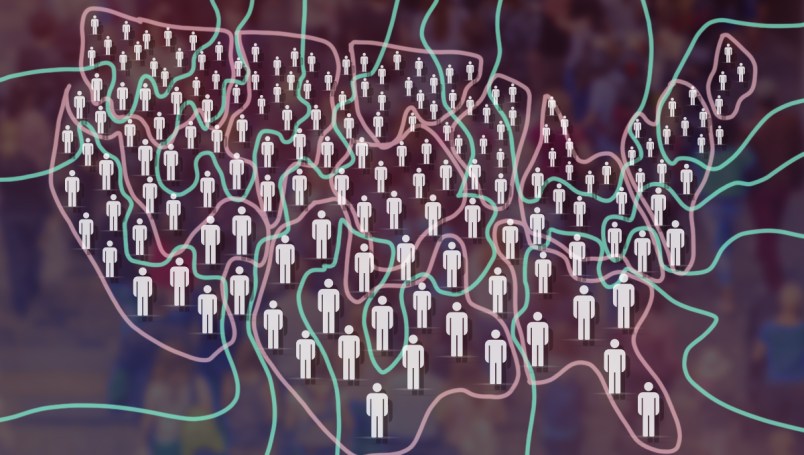A top Census Bureau official on Friday cleared up one mystery surrounding whether government data will be used to tilt electoral maps towards Republicans. Another mystery, however, remains when it comes to whether President Trump’s citizenship data project will be successful.
Chief Census Bureau scientist John Abowd gave a presentation to a group of statistical researchers that confirmed that the Census Bureau’s 2020 apportionment count — which is used to dole out U.S. House seats and Electoral College votes among states — would include both citizens and noncitizens, as was done in 2010. His clear statement came as the Census Bureau had put forward more ambiguous messaging on its plans, while it faces a lawsuit in Alabama seeking to exclude undocumented immigrants from the apportionment count.
But Abowd said that no decision had been made whether to include citizenship data on the data file states use for redistricting. Republicans have clamored to exclude noncitizens when drawing legislative maps, in order to boost political representation for white, GOP-leaning communities.
According to a copy of Abowd’s power point presentation obtained by TPM, the Census Bureau is giving itself until March 31, 2020, to announce “the specifications” of how the citizenship data will be released in 2021.
“No final decisions have been made regarding the methodology and format of the block-level CVAP data,” Abowd’s presentation said.
That lack of commitment is at odds with comments a Census Bureau official reportedly made to GOP state legislators at an ALEC conference last month, at which she said they would have access to the citizenship data for redistricting.
NPR was first to report on Abowd’s presentation to the Council of Professional Associations on Federal Statistics, which TPM has embedded below.
Trump, after backing down from the legal fight over adding a citizenship question to the 2020 census, ordered the Census Bureau to collect citizenship data using existing government records. The data could be given to states so they could exclude noncitizens in redistricting, Trump said. States now almost universally draw districts based on total population. Such an overhaul to how maps are drawn“would be advantageous to Republicans and Non-Hispanic Whites,” as a now deceased GOP gerrymandering guru once put it.
Whether government records will provide data accurate enough to make that overhaul possible is still an open question, according to redistricting experts and census observers. The Census Bureau has confirmed that the data will be assembled at a so-called “block level” — the level of granularity needed for redistricting — but hasn’t said yet whether the data will be in the redistricting file known as the “PL94-171 file,” which will be sent to states in 2021, after the 2020 census.
Abowd’s presentation said that, using data from records the Census Bureau already has access to including tax and Social Security records, it can derive citizenship status for 90 percent of the U.S. resident population The Census Bureau is turning to other sources of citizenship data, including from the Justice Department and Department of Homeland Security to fill in the remaining 10 percent, the presentation said.
The presentation stressed that the data will be subject to the Census Bureau’s privacy policies, including its new protocol to keep the personal data confidential, and would available for statistical purposes only.
See the presentation below:







I’ve seen this statement frequently when talking about redistricting, but I don’t know that I’ve ever seen anything about what exceptions currently do exist. What other methods do some states use and which states use them?
That’s a lie! The final decision has been made. It just has not been announced. They’re simply waiting to announce it until after there is no longer enough time for it to be successfully challenged in court before the 2020 election.
I’m sort of amazed that California Republicans in the rural farming counties aren’t fighting harder to count migrant fruit and vegetable pickers towards their own totals.
Bingo, 10,000 likes to truth. The judge will state that he agrees that the method is discriminatory but any objections should have been made long ago, now it is far to late to make any changes.
I’m hoping a lower court throws any such maps out pre-emptively while litigation is going on. It hasn’t even been officially claimed that CVAP is a lawful number.